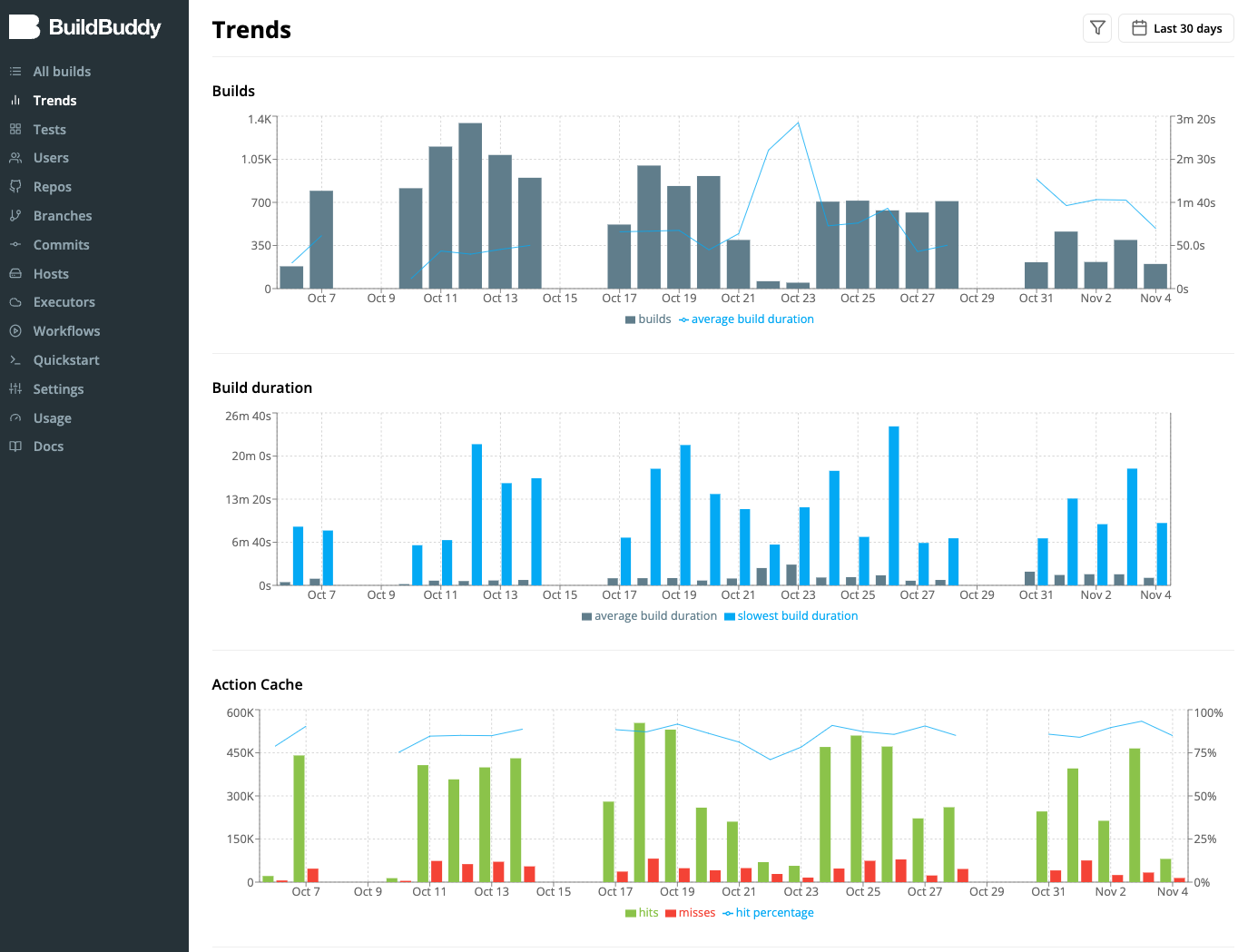Let's start with "what's BuildBuddy" for the kids in back. In short, we provide a UI, distributed cache, and remote execution platform for your Bazel builds. That means we securely compile your code, cache the artifacts, and help you visualize the results. We make it possible to build projects like Tensorflow from your laptop in under 5 minutes instead of 90 minutes.
Obviously to do all this, we have to handle some thorny engineering challenges, one of which is scheduling remote executions. For that, we have a scheduler. The scheduler just matches actions (basically jobs) received by our API to remote workers that actually do the work. If you think of a full build of something like Tensorflow as a 10 course meal, a single action is like a recipe for a tiny part of that meal. To make it easier to visualize, here's a real action from building BuildBuddy:

